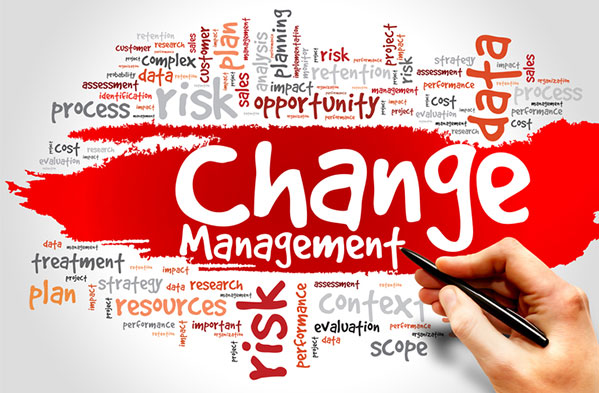Home/ Blog / Technology Based Perception of Enterprise Risk Management
The way we perceive things and the way we talk about them affects how we treat them. There is an Australian Aboriginal language called Guugu Yimithirr which has no words for left or right directions. They don’t even have the concept in their language. Instead, everything is based on north, south, east, and west, meaning instead of using directions depending on where a person is standing or looking, the directions are absolute. People who grow up speaking this language develop a mental compass which helps them orient themselves better. There is never any confusion of ‘’your right or my right’’.
Similarly, the way we talk and perceptualize about risk has an effect on the way enterprise risk management works. One way would be to look back at how we approached enterprise risk previously, and then to see how modern technology has altered our perception.

The historical approach towards enterprise risk management was limited by a lack of data
Our perception of risk is colored by our historical relationship with it. Corporate culture changes slowly, and for good reason: rapid changes do not provide a stable environment for businesses to operate in. If we go back a few decades, it simply wasn’t possible to quantify risk the way we can do it now. While specific risks – market simulations being a good example – have been modeled in computers for a long time, true risk management quantification that factored in the complete business environment was nonexistent.
In such a scenario it is easy to understand the prevailing approach of companies towards enterprise risk management until a few years ago. Enterprise risk was calculated once a decision had been made. Once the upper management decided to take a course of action, a report would be sought to judge the effect of the course of action on enterprise risk. The smartest risk managers, actuarial engineers, financial analysts, and more similar experts in the organization would then create the report, and the organization would decide whether they should go through with their plans.
The problem with this approach is that risk isn’t something that needs to be looked at when making certain decisions – risk is always present in the business environment. Risk should be the guiding light for organizations, something that drives them to stay on the right course. To think of it in nautical terms, yes, sometimes a person is sent to the top with a telescope to look afar and make sure there are no icebergs, but this does not mean that at other times the ship just sails blind. There need to be people always looking out to help make the right steering decisions.
Another major problem has been silos within the organization. Managing risk is necessary for every department. In the absence of any organization-wide enterprise risk management solution, each department manages their own risk based on their own documentation style, spreadsheets, and methodology. Thus, while risk is being managed through different means, it is not possible to gain a holistic view of risk. An even bigger problem is that this means that while one department may have information about risk, it is possible that the information will not be shared with other departments, resulting in departmental silos.
Enhancing our perception of risk with the help of technology
Technology changes this situation and quantifies risk in a way that it is always present. When something changes the risk profile of the organization, it is immediately visible to all the stakeholders in the organization. This fundamentally changes the relationship between risk and the organization. Now senior management doesn’t request a risk report after deciding what to do – they always have a holistic view of enterprise risk within their enterprise risk management solution. Thus, the ideas, discussions, and meetings all happen while taking risk into account.
It also helps organizations break departmental silos and true enterprise risk management takes their place. Risk information is not shared between departments – there is no need to share the information anymore. Since the whole organization is using one system to manage risk, every department inputs their own risk information into the same system, which is visible to everyone else. Senior management can see the risk profile of each department and the system can generate a holistic view of enterprise risk.
If organizations want their managers to make better decisions, it is important to give them the right tools. Enterprise risk management quantifies risk and makes it visible to everyone, thus allowing organizations to reduce risk and eliminate processes that might expose the organization.
If you want to see what a risk management solution like Predict360 can do for your organization, simply sign up for a 30-day free trial. You can also get a live demo of Predict360’s most exciting features by getting in touch with us through chat, or by filling the Contact Us form.
About the company
360factors, Inc. (Austin, TX) helps companies improve business performance by reducing risk and ensuring compliance. Predict360, its flagship software product, vertically integrates regulations and requirements, policies and procedures management, risks and controls, audit management and inspections, and on-line training and qualifications, in a single cloud-based platform based on artificial intelligence.
Remain up-to-date on industry news/updates through our Twitter & Linkedin profiles.
Request a Demo
Complete the form below and our business team will be in touch to schedule a product demo.
By clicking ‘SUBMIT’ you agree to our Privacy Policy.



